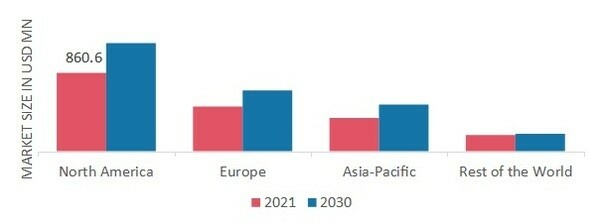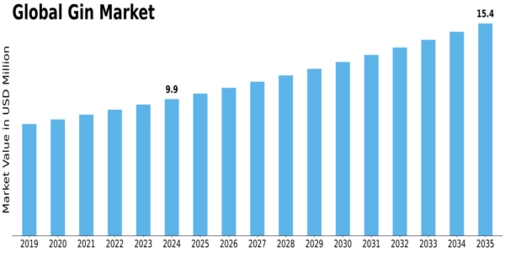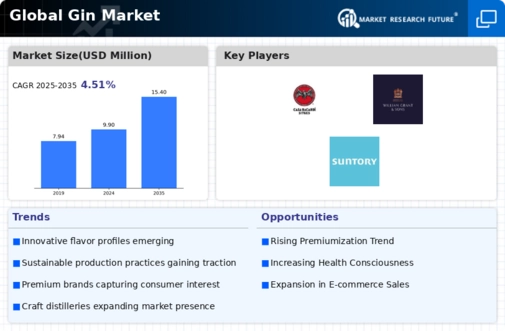By Region, the study provides market insights into North America, Europe, Asia-Pacific, and the Rest of the World. Europe's gin market accounted for USD 4336.5 million in 2021 and is expected to exhibit a significant CAGR growth during the study period. The demand for din is rising in various locations, which effectively fuels the growth of the gin industry.
Further, the major countries studied in the market report are The U.S., Canada, Germany, France, the UK, Italy, Spain, China, Japan, India, Australia, South Korea, and Brazil.
Figure 3: GIN MARKET SHARE BY REGION 2021 (%)
Source: Secondary Research, Primary Research, Market Research Future Database and Analyst Review
North America gin market accounts for the second-largest market share. The growing number of millennials in the area is anticipated to fuel the gin market. The gin sector is also driven by the region's urbanization, changing lifestyles, and disposable income. Because of the security clearance procedures established by regulatory organizations, the number of manufacturers in the United States has increased quickly. Gin distribution, sale, and production are all tightly regulated in the US. Due to the regulatory framework, several industries have consolidated at different levels.
Further, the UK gin market held the largest market share, and the Canada gin market was the fastest-growing market in the European region.
The Asia-Pacific Gin Market is expected to grow at the fastest CAGR from 2022 to 2030. This is due to the rising urbanization and rise in disposable income's effects on the number of potential consumers. According to data published by the IMF and World Bank, Asian consumers have been consistently spending more money overall on alcohol and tobacco products, which has been fueling market expansion. By 2025, overall spending will likely equal over USD 425 billion. Further, in response to changes in patron preferences, pubs and bars specialize in the unique cocktail party lounge.
Most wealthy consumers prefer vodka and gin-based cocktails like the Asian Pear Mule, Whisky Mac, Japanese Highball, Singapore Sling, and Soju Watermelon Cocktail. Moreover, China gin market held the largest market share, and the Indian gin market was the fastest-growing market in the Asia-Pacific region.








Leave a Comment